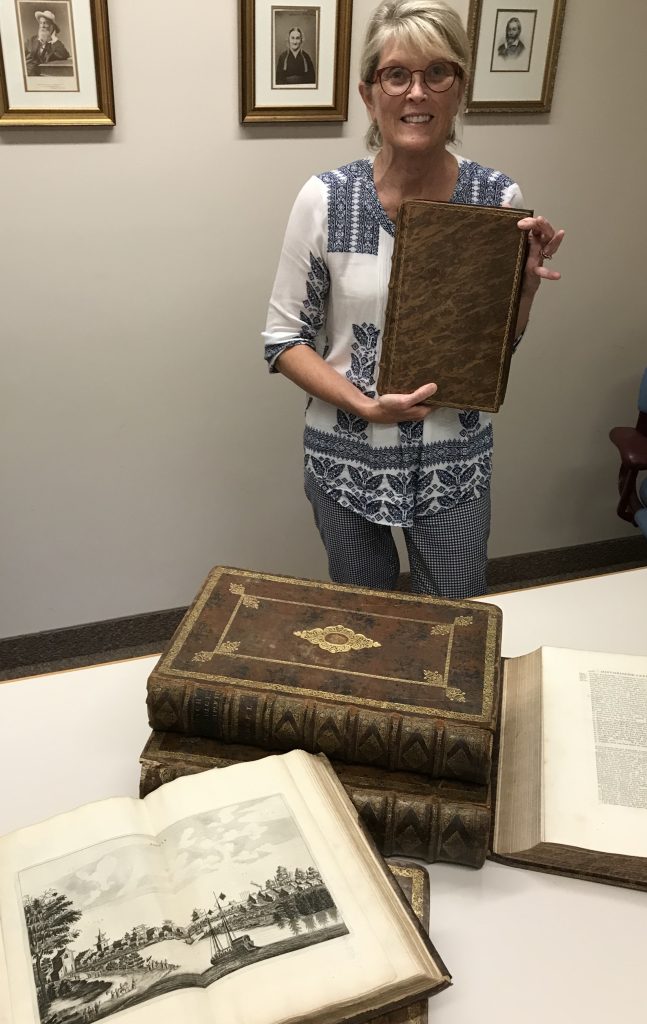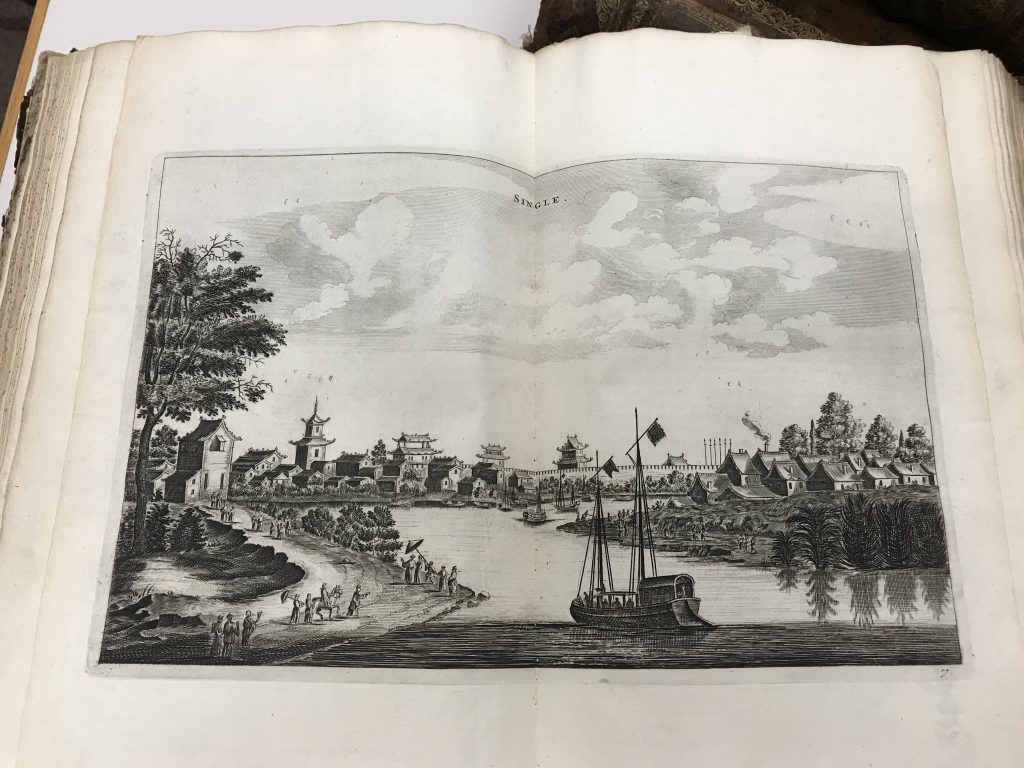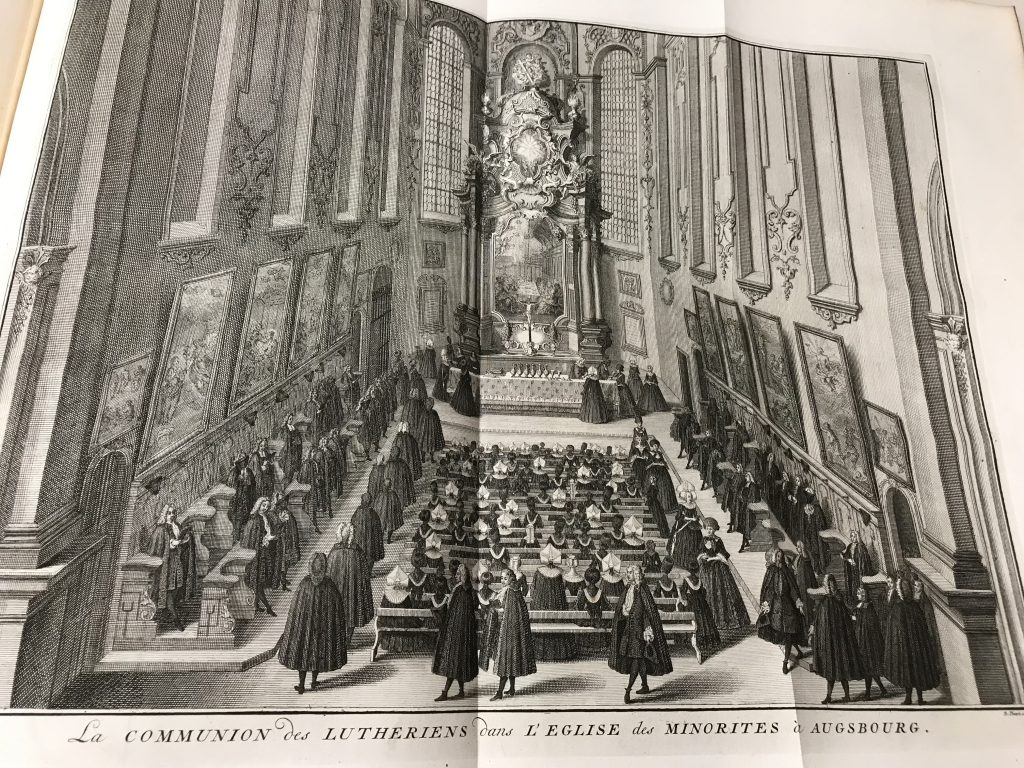The Hope College Van Wylen Library has received a gift of four very rare Dutch books, printed between 1669 and 1738, and all are related to exploration and travel. A gift from Keith Miller, grandson of Herman Miller, the books represent a particular place and period in the history of printing when European readers had a voracious appetite for books about other peoples, places and religions.

The titles (approximate translations into English) of the four books are:
Atlas Japannensis or Memorable Embassies of the Dutch East India Company to the Emperors of Japan by Arnoldus Montanus. Published by Jacob van Meurs, Amsterdam, 1669. This is the first major non-Jesuit work about Japan after the closing of Japan to non-Dutch Europeans in 1640.

An Embassy from the East India Company of the United Provinces to the Grand Tartar Cham Emperor of China by Jan Nieuhoff, published by Jacob van Meurs, Amsterdam, 3rd edition,1670. This was the first extensively illustrated book describing China. First published in 1665. The accounts were based on the journals of Johan Nieuhf, who had embarked on a quasi-official embassy to the imperial court in Beijing nearly a decade earlier; the book is comprised of several texts, many of them derived from earlier Jesuit sources.
A Voyage to the Levant: or, Travels in the Principal Parts of Asia Minor by M. Corneille le Bruyn. Published by H. van Krooneveld, Deft, 1698. Dutch painter and traveller Cornelious de Bruyn travelled to Constantinople and throughout the Levant and the Ottoman empire between 1677 and 1685. This region today would be Iraq, Syria, Lebanon, Cyprus, Turkey, Israel, Jordan, and Palestine.

The Ceremonies and Religious Customes of the Various Nations of the Known World; together with historical annotations and several curious discourses by Jean Frederic Bernard, Bernard Picart and Abraham Moubach. Published in Gravenhage, Amsterdam and Rotterdam by Van der Kloot, Uytwerf, and Beman; 1727-1738 in 7 volumes). Considered the most famous encyclopedic work on religion of the 18th century, it was later called the first global vision of religion. The seven volumes include extensive engravings by Bernard Picart, one of the most famous engravers of the 18th century. Vol. 1 Jews/Catholics Vol 2 Catholics Vol 3 Americas, Vol 4 India, Asia, Africa, Vol 5 Greek Orthodox, Protestants, Vol 6 Anglicans, Quakers, Deists, Vol 7 Islam.
The fact that all four books were owned by Herman Miller, the President of the Herman Miller Furniture Company, raises a number of interesting questions. It is unknown how he acquired them, but I like to think that they were owned originally by a single individual.
So significant are each of these books that they have themselves been the subject of a number of books and articles. In The Book that Changed Europe (Hunt, Jacob and Mijnhardt, Harvard University Press,2010), the authors describe Religious Ceremonies of the World as “marking a major turning point in European attitudes toward religious belief and hence the sacred. It sowed the radical idea that religions could be compared on equal terms, and therefore that all religions were equally worthy of respect — and criticism.” The books offer incredible insight into eighteenth century views of religion and especially of religious tolerance.
The author and illustrator of A Voyage to the Levant, Corneille le Bruyn, is the subject of a book chapter theorizing that he was likely a spy, and possibly involved in a politically motivated murder of a Dutch statesman.
Hope student Aine O’Conner will be using the Bernard and Picart book on Ceremonies and Religious Customes in her research for an independent study this fall.
When published, The Ceremonies and Religious Customes of the Various Nations of the Known World was sold primarily by subscription for 150 florins, probably about $9,000 in today’s money.
The fact that all four books were owned by Herman Miller, the President of the Herman Miller Furniture Company, raises a number of interesting questions. It is unknown how he acquired them, but I like to think that they were owned originally by a single individual. Such a person would have likely had an extensive library and was probably quite wealthy. When published, The Ceremonies and Religious Customes of the Various Nations of the Known World was sold primarily by subscription for 150 florins, probably about $9,000 in today’s money.

